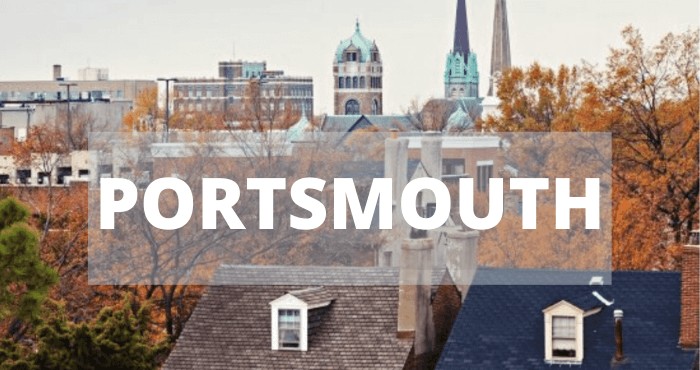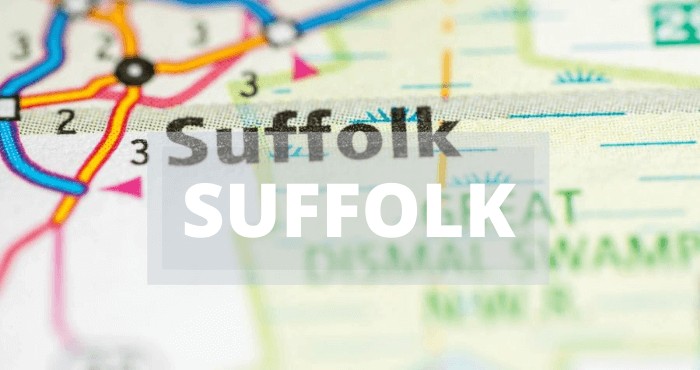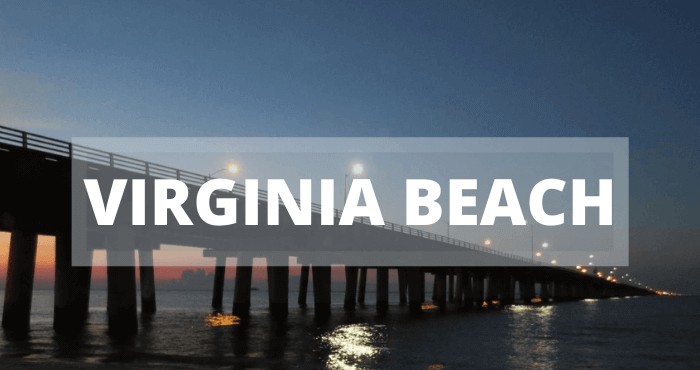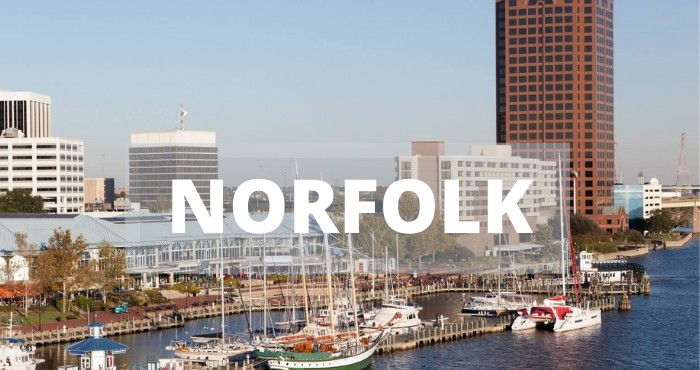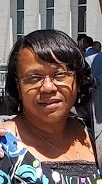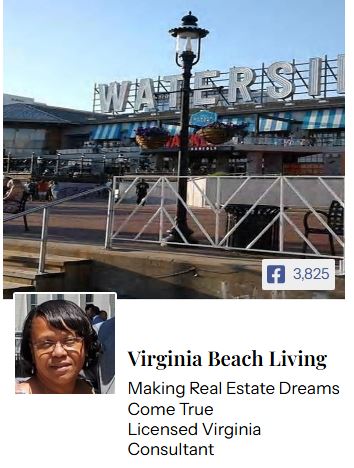Are you interested in homes for sale in Virginia Beach? Finding the perfect house that fits your needs and lifestyle requires more than just an online search. Let’s make your home-buying experience smooth and stress-free! Let’s discover Virginia Beach, Virginia!
Buying a Virginia Beach Home
If you’re ready to buy a home in Virginia Beach, our team is here to help. We offer real estate expertise to ensure your home search is hassle-free. We’re committed to saving you time and money, helping you find homes that meet your criteria. Contact us today to get answers to all your questions.
Selling a Virginia Beach Home
Thinking about selling your Virginia Beach home? We use cutting-edge real estate marketing tools to help you reach the widest audience of potential buyers. From social media to traditional marketing, we make sure your home gets the attention it deserves. We will also negotiate on your behalf, ensuring the best terms
Thinking of selling or buying a Virginia Beach home?
Living in Virginia Beach
Virginia Beach, located along the Mid-Atlantic Ocean, is famous for its sandy beaches, vibrant tourist attractions, and lively local festivals. The area offers year-round activities, including a mix of outdoor adventures and urban amenities. With seven distinct boroughs—Bayside, Kempsville, Lynnhaven, Princess Anne, Pungo, and the Virginia Beach Oceanfront—each offers unique living experiences.
Whether you’re looking to relax by the coast, enjoy outdoor sports like basketball or golf, or explore nature, Virginia Beach has it all. Enjoy stunning beaches from Chesapeake Beach (also known as Chic’s Beach) near the Chesapeake Bay Bridge Tunnel to the Atlantic Avenue beaches by the Virginia Beach Oceanfront. Spend the day at the beach, grab a bite at a local restaurant, and enjoy great views!
What’s Nearby
For shopping, head to Norfolk Premium Outlets, ,Pembroke Mall, Lynnhaven Mall, or Virginia Beach Town Center. If you’re looking for outdoor fun, visit Bayville Farms Park with its disc golf course, dog park, basketball and tennis courts. The Haygood Roller Skating Center features a skating rink, arcade, indoor playground, two bowling lanes, and a pizza parlor.
Explore Virginia’s rich history by visiting the Ferry Plantation House and The Thoroughgood House. Virginia Beach is also near several military bases, including NAS Oceana, Dam Neck, Naval Amphibious Base Little Creek, and Joint Expeditionary Base Little Creek-Fort Story.
How To Get Around Town
The average commuter time in Virginia Beach ranges from 15 to 30 minutes, depending on traffic. Most people drive or carpool to work. With Interstates 64 and 264 nearby, getting to businesses, hospitals, military bases, and universities is a breeze. Virginia Beach is less than 12 miles from Norfolk, and nearby cities such as Hampton, Portsmouth, and Chesapeake are all less than 30 miles away.
For those looking for public transportation, the “Tide” light rail system in Norfolk provides quick access to Downtown Norfolk, offering another convenient way to get around.
Explore the best homes for sale in Virginia Beach. Our featured listings include a range of properties that suit various budgets and lifestyles. Whether you’re looking for a cozy beach bungalow or a spacious family home, we have options that cater to your needs. Contact us today to schedule a tour!
Virginia Beach Schools
If you’re new to the area or moving to a different neighborhood, the Virginia Beach School Locator can help you find the right school for your child. Make sure to verify your address with the Virginia Beach School system to confirm your assigned elementary, middle, or high school. Many parents also turn to GreatSchools.org for additional information about local schools.
Virginia Beach Crime Data
For crime statistics in Virginia Beach and surrounding neighborhoods, visit City-Data.com. Virginia Beach is known for its picturesque beauty and safe environment, making it a popular destination for residents and tourists alike.
The city is home to several military bases, large corporations, hospitals, schools, and universities, all contributing to its stable economy. Housing inventory is consistently updated to accommodate the growing population, making it a desirable place to live and work.
Live the Life!
Virginia Beach is full of exciting things to do and places to see. With nearby shopping centers, recreational parks, and local attractions, residents enjoy a high quality of life. Whether you’re exploring the local dining scene or spending a day at the beach, there’s always something to do in Virginia Beach.
About Virginia Beach
Virginia Beach is an independent city located on the southeastern coast of Virginia. As of the 2019 census, the population was 449,974, making it the most populous city in Virginia and the 41st most populous city in the United States. Virginia Beach sits at the mouth of the Chesapeake Bay, where it meets the Atlantic Ocean, and is part of the Hampton Roads metropolitan area, also known as “America’s First Region.”
A resort city with miles of beaches, Virginia Beach is home to a vibrant oceanfront community, featuring hundreds of hotels, restaurants, and shops. It hosts major events, including the East Coast Surfing Championships and the North American Sand Soccer Championship, attracting visitors from all over.
In addition to its scenic beauty, Virginia Beach offers several state parks, protected beach areas, and three military bases. It’s also home to Regent University and the Christian Broadcasting Network (CBN) headquarters. The city is rich in history, with Cape Henry marking the site of the first landing of English colonists in 1607.
Virginia Beach is also listed in the Guinness Book of Records as having the longest pleasure beach in the world. The city is located at the southern end of the Chesapeake Bay Bridge-Tunnel, the longest bridge-tunnel complex in the world.
History
The Chesepian were the indigenous people of the area now known as Tidewater, Virginia, at the time of European contact. While little is known about them, archaeological evidence suggests they were related to the Carolina Algonquian or Pamlico people, and likely spoke one of the Algonquian languages. The Chesepian were part of the Powhatan Confederacy, a loose group of tribes along the coast with a population in the tens of thousands. They inhabited the area now defined as the independent cities of Norfolk, Portsmouth, Chesapeake, and Virginia Beach.
In 1607, after a 144-day voyage, three ships led by Captain Christopher Newport, carrying 105 men and boys, made their first landfall in the New World at the southern mouth of the Chesapeake Bay, where it meets the Atlantic Ocean.
They named the location Cape Henry, after Prince Henry Frederick, the eldest son of King James I of England. These English colonists of the Virginia Company of London were instructed to seek a more sheltered location inland to establish a permanent settlement. They moved on to establish Jamestown on the north side of the James River.
Adam Thoroughgood (1604–1640) of King’s Lynn, Norfolk, England, was one of the first Englishmen to settle in what would later become Virginia Beach. At the age of 18, Thoroughgood immigrated as an indentured servant. After gaining his freedom, he became a prominent local figure, elected to the House of Burgesses in 1629.
In 1634, the Colony of Virginia was divided into eight original shires, later renamed counties. Thoroughgood played a key role in naming New Norfolk County in 1637, which later split into Upper Norfolk County (renamed Nansemond County) and Lower Norfolk County. He settled along the Lynnhaven River, named after his hometown in England.
By 1691, Lower Norfolk County was split into Norfolk and Princess Anne counties. Princess Anne County extended from Cape Henry to the North Carolina border and included all the land fronting the Atlantic Ocean. This jurisdiction existed for over 250 years until it was renamed Virginia Beach in 1963 after the consolidation of the two counties.
In the 19th century, Virginia Beach began developing as a resort area. The arrival of rail service in 1883 helped boost tourism to the Virginia Beach Hotel, which was later reopened as the Princess Anne Hotel in 1888. In 1891, the hotel’s guests witnessed a dramatic shipwreck and rescue by the United States Life-Saving Service. The wreck’s figurehead was erected as a monument, which stood on the oceanfront for over 50 years, inspiring the Norwegian Lady Monuments placed in Virginia Beach and Moss, Norway.
The completion of Virginia Beach Boulevard in 1922 connected the resort with Norfolk, making it accessible by automobile. As the resort grew in popularity, it was incorporated as a town in 1906. By the 1920s, the Virginia Beach resort area was bustling with casinos, amusement parks, and family-friendly attractions. The Cavalier Hotel, opened in 1927, became a popular vacation spot for many.
In 1952, Virginia Beach gained status as an independent city, although ties remained with Princess Anne County. In 1963, following a referendum and approval from the Virginia General Assembly, the two jurisdictions consolidated to form the modern Virginia Beach.
The Alan B. Shepard Civic Center, dedicated to the first American astronaut, was built in 1958 and later demolished in 1994 to make way for a municipal parking lot. Over the years, Virginia Beach’s economy has relied heavily on real estate, defense, and tourism.
Notable public-private developments, such as the Virginia Beach Convention Center, the Oceanfront Hilton Hotel, and the Virginia Beach Town Center, have spurred growth. The Town Center opened in 2003, followed by the Convention Center in 2005.
Today, Virginia Beach faces limited available land for new construction in the northern part of the city, with development focused on infill and redevelopment. The growth of residential neighborhoods near Naval Air Station Oceana has led to concerns about the base’s future.
Despite local support for the base, the Pentagon Base Realignment and Closure Commission has proposed its closure within the next decade.
Geography
According to the United States Census Bureau, the city has a total area of 497 square miles (1,290 km2), of which 249 square miles (640 km2) is land and 248 square miles (640 km2) (49.9%) is water. It is the largest city in Virginia by total area and third-largest city land area. The average elevation is 12 feet (3.7 m) above sea level. A major portion of the city drains to the Chesapeake Bay by way of the Lynnhaven River and its tributaries.
The city is located at the southeastern corner of Virginia in the Hampton Roads area bordering the Atlantic Ocean. The Hampton Roads Metropolitan Statistical Area (officially known as the Virginia Beach-Norfolk-Newport News, VA-NC MSA) is the 37th largest in the United States, with a total population of 1,707,639.
The area includes the Virginia cities of Norfolk, Virginia Beach, Chesapeake, Hampton, Newport News, Poquoson, Portsmouth, Suffolk, Williamsburg, and the counties of Gloucester, Isle of Wight, James City, Mathews, Surry, and York, as well as the North Carolina county of Currituck. While Virginia Beach is the most populated city within the MSA, it actually currently functions more as a suburb. The city of Norfolk is recognized as the central business district, while the Virginia Beach oceanside resort district and Williamsburg are primarily centers of tourism.
Neighborhoods
When the modern city of Virginia Beach was created in 1963, by the consolidation of the 253 square miles (660 km2) Princess Anne County with the 2 square miles (5.2 km2) City of Virginia Beach, the newly larger city was divided into seven boroughs: Bayside, Blackwater, Kempsville, Lynnhaven, Princess Anne, Pungo, and Virginia Beach (oceanfront).
Virginia Beach has many distinctive communities and neighborhoods within its boundaries, including: Alanton, Aragona Village, the largest subdivision in Tidewater when completed, Bay Colony, Bayside, Cape Henry, Chesapeake Beach, Croatan Beach, Great Neck Point, Green Run, Kempsville, Lago Mar, London Bridge, Lynnhaven, Newtown, The North End, Oceana, Ocean Park, Pembroke Manor, Princess Anne, Pungo, Red Mill Commons, Sandbridge, Thalia, and Thoroughgood.
Climate in Virginia Beach
Temperature and Precipitation
The mean annual temperature is 59.6 °F (15.3 °C), with an average annual snowfall of 5.8 inches (150 mm) at the airport, decreasing to around 3.0 inches (76 mm) in the southeastern corner around Back Bay. Average annual precipitation is high, ranging between 47 inches (1,200 mm) at the airport to over 50 inches (1,300 mm) per year at Back Bay.
Climate Type
The climate of Virginia Beach is humid subtropical (Köppen: Cfa). Winters are cool, and snowfall is light, while summers are hot and humid. The official weather statistics are recorded at Norfolk International Airport on the extreme northwestern border of Virginia Beach.
Wet Seasons
The wettest season is summer, specifically from July to early September, with August being the single wettest month, averaging over 5.5 inches of rain. From October to June, average monthly precipitation is remarkably consistent, ranging between 3.1 and 3.7 inches.
Temperature Extremes
The highest recorded temperature to date was 105 °F (41 °C) in July 2010, and the lowest recorded temperature was −3 °F (−19 °C) in January 1985; both were recorded at Norfolk International Airport.
Storm Tracks
The geographic location of the city, in relation to the principal storm tracks, is especially favorable, which is why Virginia Beach has earned the reputation as a vacation destination. It is south of the average path of storms originating in the higher latitudes and north of the usual tracks of hurricanes and other major tropical storms, with the exception of Hurricane Isabel in 2003.
Plant Growth
Due to the moderating effects of the Chesapeake Bay and the Atlantic Ocean, Virginia Beach is the northernmost location on the east coast where many species of plants (both subtropical and tropical) will reliably grow. For example, Spanish moss is near the northernmost limit of its natural range at First Landing State Park, where it is widespread.
Other plants like Sabal minor, Sabal palmetto, Pindo Palm (in protected locations), and Oleander thrive here while they tend to succumb to the colder winter temperatures to the north and inland to the west.
Demographics
Here’s the latest demographic breakdown for Virginia Beach, VA, based on the 2020 Census. Virginia Beach, Virginia, had a population of approximately 449,974.
– **Race and Ethnicity**:
– White (Non-Hispanic): Approximately 54.8%
– Black or African American: Approximately 27.4%
– Asian: Approximately 5.6%
– Hispanic or Latino (of any race): Approximately 9.6%
– Two or More Races: Approximately 4.6%
– American Indian and Alaska Native: Approximately 0.3%
– Native Hawaiian and Other Pacific Islander: Approximately 0.1%
– **Age Distribution**:
– Under 18 years: Approximately 22.2%
– 18 to 24 years: Approximately 9.4%
– 25 to 44 years: Approximately 27.5%
– 45 to 64 years: Approximately 25.1%
– 65 years and older: Approximately 15.8%
– **Gender**:
– Female: Approximately 51.4%
– Male: Approximately 48.6%For more specific and detailed information, you may refer to the U.S. Census Bureau website or local government resources.
Economy of Virginia Beach
Diverse Industries
Virginia Beach is composed of a variety of industries, including national and international corporate headquarters, advanced manufacturers, defense contractors, and locally-owned businesses. The city’s location and business climate have made it a hub of international commerce, as nearly 200 foreign firms have established a presence, an office location, or their North American headquarters in Hampton Roads.
Major Corporations
Twenty internationally-based firms have their U.S. or North American headquarters in Virginia Beach, including companies like STIHL, Busch, IMS Gear, and Sanjo Corte Fino. Other major companies headquartered in Virginia Beach include Amerigroup, the Christian Broadcasting Network, and Operation Blessing International. Other major employers include GEICO, VT, and the Navy Exchange Service Command. Virginia Beach was ranked at number 45 on Forbes‘ list of best places for business and careers.
Tourism’s Impact
Tourism produces a large share of Virginia Beach’s economy. With an estimated $857 million spent in tourism-related industries, 14,900 jobs cater to 2.75 million visitors. City coffers benefit as visitors provide $73 million in revenue.
Convention Center and Hospitality
Virginia Beach opened a Convention Center in 2005, which caters to large group meetings and events. Hotels not only line the oceanfront but also cluster around Virginia Beach Town Center and other parts of the city. Restaurants and entertainment industries also directly benefit from Virginia Beach’s tourism.
Agribusiness Sector
Virginia Beach has a large agribusiness sector which produces $80 million for the city economy. One hundred-seventy-two farms exist in Virginia Beach, mostly below the green line in the southern portion of the city. Farmers are able to sell their goods and products at the city’s Farmer’s Market.
Military Presence
U.S. Military Bases
Virginia Beach is home to several United States military bases. These include the United States Navy’s NAS Oceana, Training Support Center Hampton Roads, and the Joint Expeditionary Base East located at Cape Henry. Additionally, NAB Little Creek is located mostly within the city of Virginia Beach but carries a Norfolk address.
NAS Oceana
NAS Oceana is the largest employer in Virginia Beach; it was decreed by the 2005 BRAC Commission that NAS Oceana must close unless the city of Virginia Beach condemns houses in areas designated as “Accident Potential Zones.” This action has never been the position of the United States Navy; indeed, the Navy had not recommended NAS Oceana to the BRAC Commission for potential closure. The issue of closure of NAS Oceana remains unresolved as of May 2008.
Additionally, located in nearby Norfolk is the central hub of the United States Navy’s Atlantic Fleet, the Norfolk Navy Base. Fifty-four percent of the 171,000 people working in Virginia Beach live in the city, 12% live in Chesapeake, and 10% live in Norfolk. An additional 99,600 people commute from Virginia Beach, with 35% going to Norfolk and 23% going to Chesapeake. In 2016, 3.9% of residents were unemployed. Both NAS Oceana and Training Support Center Hampton Roads are considered to be the largest of their respective kind in the world.
Cultural Attractions
The city is home to several points of interest in the historical, scientific, and visual/performing arts areas, and has become a popular tourist destination in recent years. The Virginia Museum of Contemporary Art features regularly changing exhibitions in a variety of media.
Exhibitions feature painting, sculpture, photography, glass, video, and other visual media from internationally acclaimed artists as well as artists of national and regional renown. MOCA was born from the annual Boardwalk Art Show, which began in 1952 and is now the museum’s largest fundraiser. By operating at a national standard, MOCA received accreditation from the American Alliance of Museums in 2010.
Virginia Aquarium & Marine Science Center
The Virginia Aquarium & Marine Science Center (formerly the Virginia Marine Science Museum) is a popular aquarium near the oceanfront that features the 300,000-gallon Norfolk Canyon Aquarium, containing sand tiger, nurse, and brown sharks, as well as stingrays and other large open-ocean dwellers. There is also a 70,000-gallon sea turtle aquarium, sea turtle hatchling laboratory, hands-on ocean exploration exhibits, jellyfish and octopus aquariums, and even a life-size model of a humpback whale. Other features include the Owls Creek salt marsh and a nature trail.
Military Aviation Museum
One of the world’s largest collections of World War I and World War II aircraft is located at the Military Aviation Museum in the Pungo area of Virginia Beach.
Entertainment Venues
The Virginia Beach Amphitheater, built in 1996, features a wide variety of popular shows and concerts, ranging from Kenny Chesney to Taylor Swift to Coldplay to Ozzfest. The Sandler Center, a 1200-seat performing arts theatre, opened in the Virginia Beach Town Center in November 2007.
Historical Sites
Virginia Beach is home to many sites of historical importance and has 18 sites on the National Register of Historic Places. Such sites include the Adam Thoroughgood House (one of the oldest surviving colonial homes in Virginia), the Francis Land House (a 200-year-old plantation), the Cape Henry Lights and nearby Cape Henry Light Station (a second tower), Bayville Farm, De Witt Cottage, Ferry Farm Plantation, Dr. John Miller-Masury House, Adam Keeling House, Old Donation Church, Pembroke Manor, Pleasant Hall, Shirley Hall (Devereaux House), Thomas Murray House, U.S. Coast Guard Station (Seatack), Upper Wolfsnare, Weblin House, Wishart Boush House, and Wolfsnare.
Edgar Cayce and His Legacy
The Edgar Cayce Hospital for Research and Enlightenment was established in Virginia Beach in 1928 with 60 beds. Cayce was a psychic from Kentucky who claimed healing abilities and made prophecies. He is known as the father of the “New Age” movement of the 1960s. Virginia Beach was his home until he died on January 3, 1945. His followers are still active in Virginia Beach at the Association for Research and Enlightenment (A.R.E.).
The 67th street facility features a large private library of books on psychic matters and is open to the public. The traditional beach-architecture headquarters building features massage therapy by appointment. Atlantic University was opened by Cayce in 1930; it closed two years later but was re-opened in 1985. Atlantic University was originally intended for the study of Cayce’s readings and research on spiritual subjects.
Festivals and Events
The city’s largest festival, the Neptune Festival, attracts 500,000 visitors to the oceanfront and 350,000 visitors to the air show at NAS Oceana. Celebrating the city’s heritage link with Norway, events are held in September in the oceanfront and Town Center areas.
Every August, the American Music Festival provides festival attendees with live music performed on stages all over the oceanfront, including the beach on Fifth Street. The festival ends with the Rock ‘n’ Roll Half Marathon.
HAMPTON ROADS CITIES
